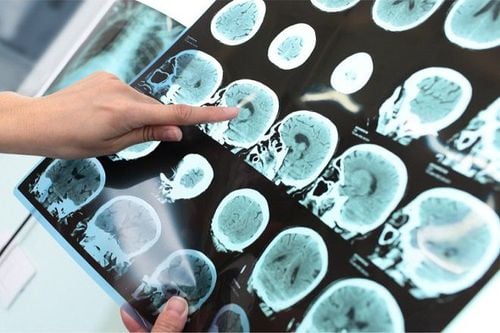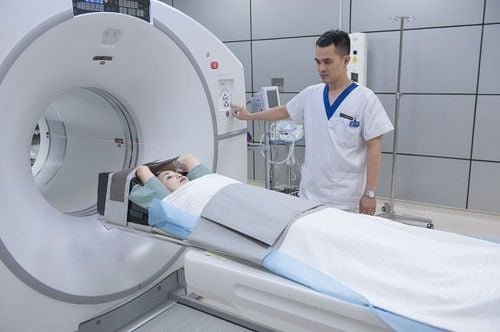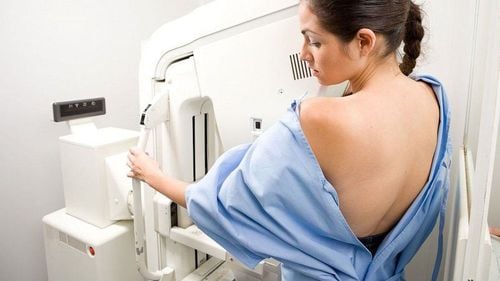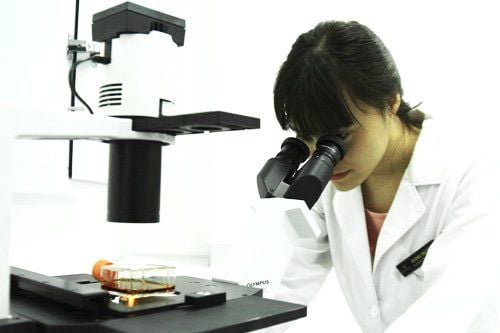This is an automatically translated article.
The article is professionally consulted by Master, Doctor Ton Nu Tra My - Department of Diagnostic Imaging - Vinmec Central Park International General Hospital.Breast cancer is a dangerous disease and ranks 3rd in the mortality rate among cancers in women. The rate of people with breast cancer is increasing, the age of breast cancer is getting younger and younger. If breast cancer is detected early, it is easier to treat and the prognosis is better. Therefore, it is very important to examine and screen the disease from the time there are no symptoms. Currently, with the development of science and technology, medicine has many imaging tools to help screen early for breast cancer.
1. What is breast cancer?
Breast cancer is a malignant tumor of the breast, containing cancerous cells, which multiply very quickly in surrounding tissues or spread to other parts of the body. Breast cancer can appear as primary (from the breast tissue itself) or metastatic (from other tissue to the breast). Metastatic breast cancer, or advanced cancer, is when cancer cells located in the breast move to another organ or part of the body.The cause of breast cancer is still unknown. However, several factors increase the risk of breast cancer, including:
Age Stress Family history of breast cancer. Genetic factors that carry the BRCA1 and BRCA2 genes. Previous history of cancer, such as colon or ovarian cancer Use of hormone replacement therapy Use of alcohol Age of first pregnancy after 30, do not breastfeed... However, risk factors are not a surefire sign that you will get breast cancer. Some women get breast cancer, even though there are no risk factors. On the other hand, many women have risk factors but never develop the disease.

Symptoms of breast cancer may not appear in the early stages of the disease. However, as cancer develops, some common symptoms include:
A lump near the breast or near the armpit Pain in the breast or nipple Nipple bleeding Changes in the breast or nipple such as color , shape or size Swelling in the armpit Redness or peeling around the nipple or breast skin
Trắc nghiệm: Những lầm tưởng và sự thật về ung thư vú
Ung thư vú có tỷ lệ tử vong cao nhất ở nữ giới khiến họ rất lo sợ bản thân mắc phải căn bệnh này. Tuy nhiên, không ít chị em có những hiểu biết thái quá về ung thư vú. Thử sức cùng bài trắc nghiệm sau sẽ giúp bạn loại bỏ được những nghi ngờ không đúng về căn bệnh này.
Bài dịch từ: webmd.com
2. 5 common imaging techniques in breast cancer assessment
To diagnose and evaluate whether a breast lump is malignant or benign, your doctor may order one or more imaging techniques.Your doctor may order a mammogram, breast ultrasound, breast MRI, PET/CT, or scan. If the tumor is confirmed to be benign, no further tests are needed, the doctor will advise you to follow up periodically or follow up for a short time depending on the case. If imaging studies do not give clear results or the tumor is suspected to be malignancy, you may be advised to perform aspiration cytology or biopsy under the guidance of ultrasound, radiography or magnetic resonance. to take cells or tissue samples of breast tumors for cytology or, histology from which to know the nature of the breast tumor.
Below are 5 common imaging techniques in breast cancer assessment, including:
Mammogram or mammogram. A mammogram is an imaging method that uses low-dose X-rays to see inside the breast for early diagnosis of breast cancer. It is the oldest and first used imaging tool in breast cancer screening. Today, tomosynthesis is also known as three-dimensional (3-D) mammography. Tomosynthesis creates multiple images of the breast from different angles and reconstructs or "composites" into a set of three-dimensional images. Early studies suggest that this method is more likely to detect breast lumps, especially in women with dense breast tissue. Breast ultrasound: is a technique that uses sound waves to create images of structures inside the breast. During ultrasound, the doctor uses a transducer (transducer) close to the skin, the transducer has the function of both transmitting and receiving ultrasound waves. During ultrasound, the crystals inside the transducer emit ultrasound waves that travel inside the body. The tissues, bones and fluids in the body - partly absorb or transmit - partly reflect the sound waves and return to the transducer. The transducer receives the feedback sound waves, sends this information to the processor, after analyzing the feedback signals by image processing software and algorithms, combines the information to build and reconstruct into ultrasound images that help doctors see structures inside the breast, thereby detecting breast lumps. Breast Magnetic Resonance: An imaging technique used to detect breast cancer and other abnormalities in the breast. Magnetic resonance imaging of the breast is usually performed when the doctor needs more information about the extent of the disease that other imaging methods such as mammograms (mammograms) and ultrasound of the breast cannot respond to or are used. Used to screen for breast cancer in women at high risk for breast cancer (For more information, please see “breast cancer risk”) PET/CT scan: images are obtained by a combination of PET scan and CT scan to provide anatomical identification of abnormal metabolic activity in the breast. This technique can detect breast cancer, determine if it has spread, assess the effectiveness of a treatment plan, and determine if the cancer will return after treatment.

If the above imaging techniques do not clearly show whether the tumor is benign or malignant, you may need further cytology or histopathological tests under ultrasound guidance, mammography. or magnetic resonance to know the nature of the breast tumor. Specifically, there are the following methods:
Fine needle aspiration (FNA): is a technique that uses a small needle under ultrasound guidance, pierces the breast tumor, creates negative pressure and withdraws the contents. inside the tumor to do cytological examination. Core biopsy (CNB) under ultrasound guidance: A technique that uses a needle with a core larger than the needle of fine needle aspiration cytology, under ultrasound guidance to take tissue samples from the tumor for tissue testing. X-ray-guided breast biopsy (Stereotaxic): is a technique of taking breast tissue samples under the 3-dimensional positioning of a mammogram machine for histopathological examination. MRI-guided biopsy (MRI-guided biopsy): is a technique to take breast tissue samples under the 3-dimensional positioning of the breast magnetic resonance machine for histopathological examination.
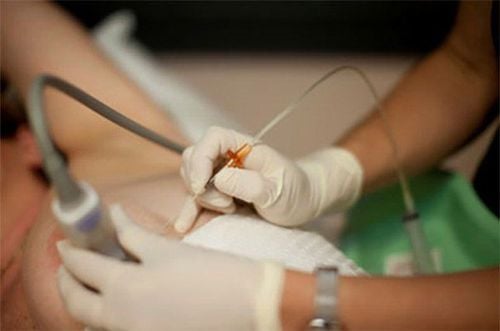
3. Results of breast tumor assessment
If the breast lump is not cancerous, follow-up periodically, depending on the specific case, your doctor will advise you to follow up periodically or short-term with breast imaging techniques and by self-examination. breast. You may be asked to have a follow-up visit in three to six months to assess the progress of the breast lump. If the diagnosis is suspected breast cancer after a physical examination and mammogram, but a biopsy shows benign tissue, you will be referred to a more specialized physician for further advice. If the breast lump is cancerous, you will be referred to an oncologist to help you with staging and treatment planning. Treatment options depend on the stage of the cancer and the type of breast cancer.Currently, Vinmec International General Hospital has been implementing a Breast Cancer Screening Package for women of different ages. At Vinmec, there is a full range of necessary medical equipment, a system of modern medical machines to perform methods of examination, diagnosis, testing, imaging, and treatment of breast cancer at many stages. . Accordingly, the breast cancer examination and treatment process at Vinmec is carried out by a team of highly qualified doctors and nurses who have undergone training and are technically certified, able to handle quickly and effectively. . Therefore, when using Vinmec's breast cancer screening and early detection package, customers can detect cancer even when there are no symptoms.
Please dial HOTLINE for more information or register for an appointment HERE. Download MyVinmec app to make appointments faster and to manage your bookings easily.
Reference source: radiologyinfo.orgSEE MORE
Superior ultrasound device, detecting breast cancer from 'egg' - ABUS Vinmec ultrasound machine uses GE Healthcare's most modern ultrasound machine to detect breast cancer early When should you start breast cancer screening?






